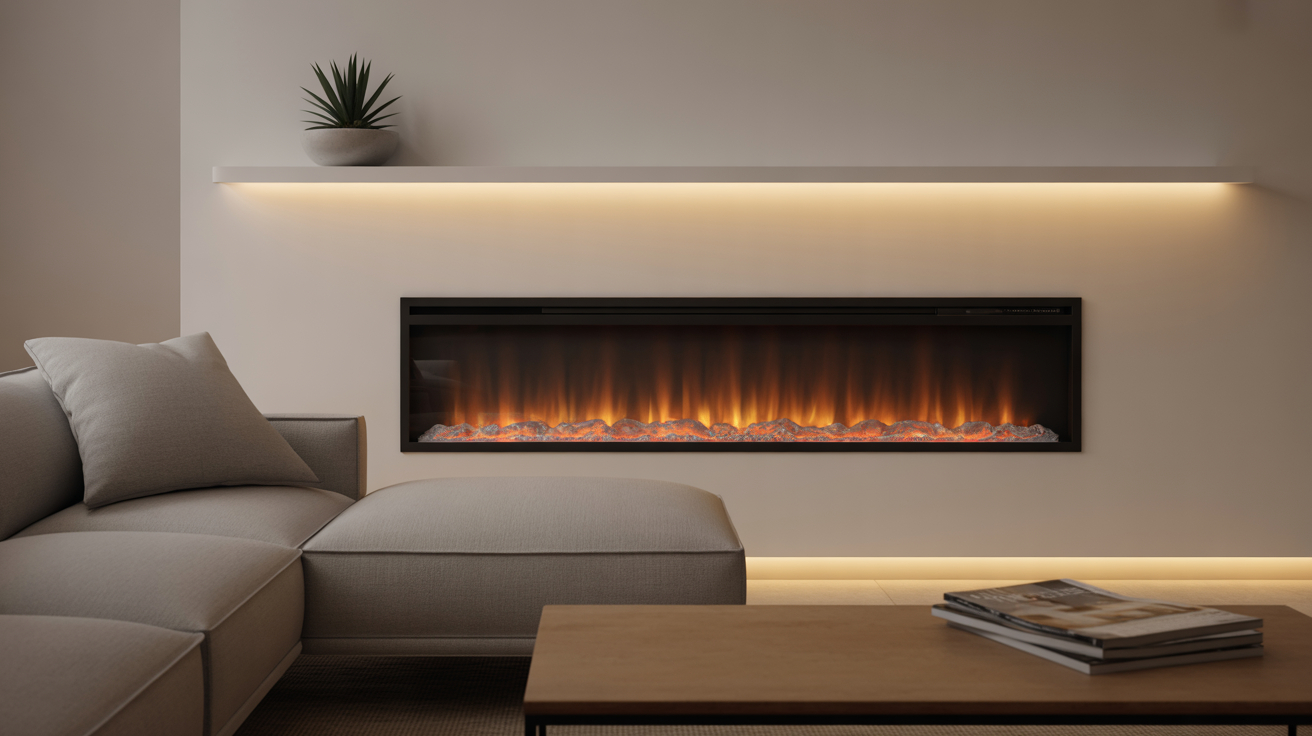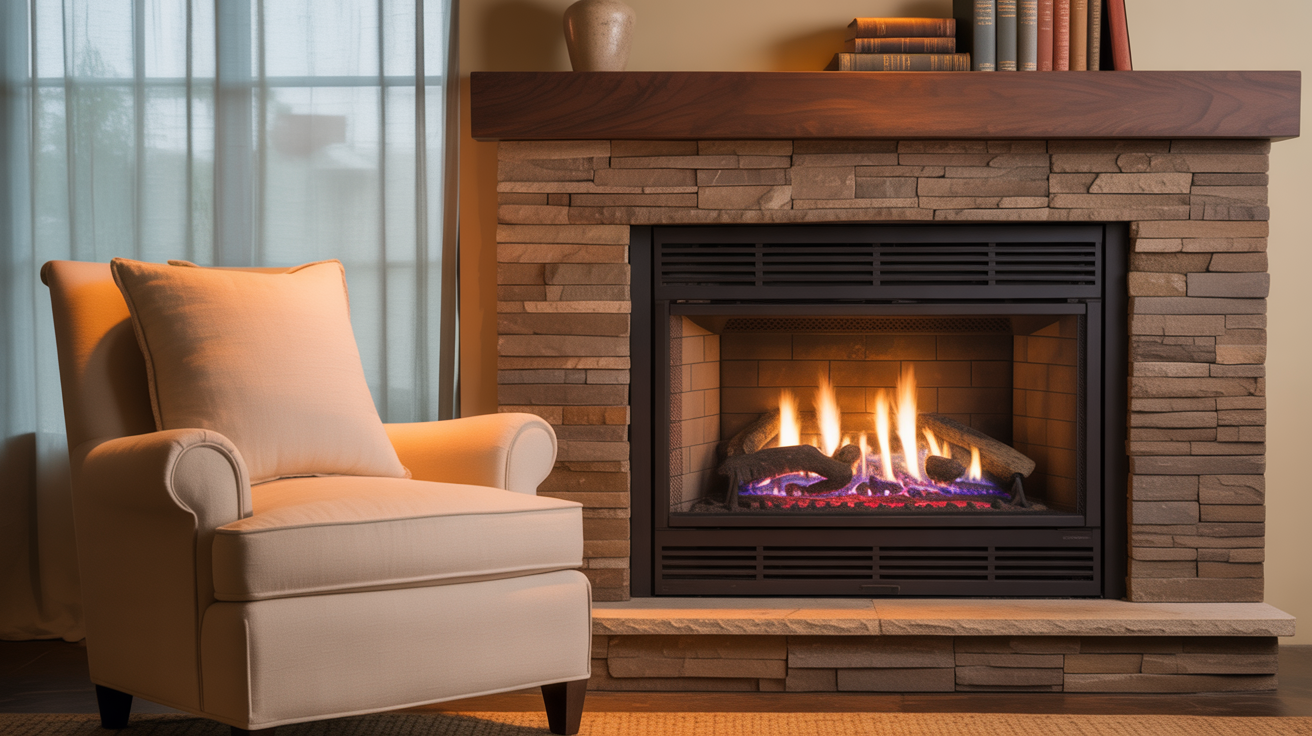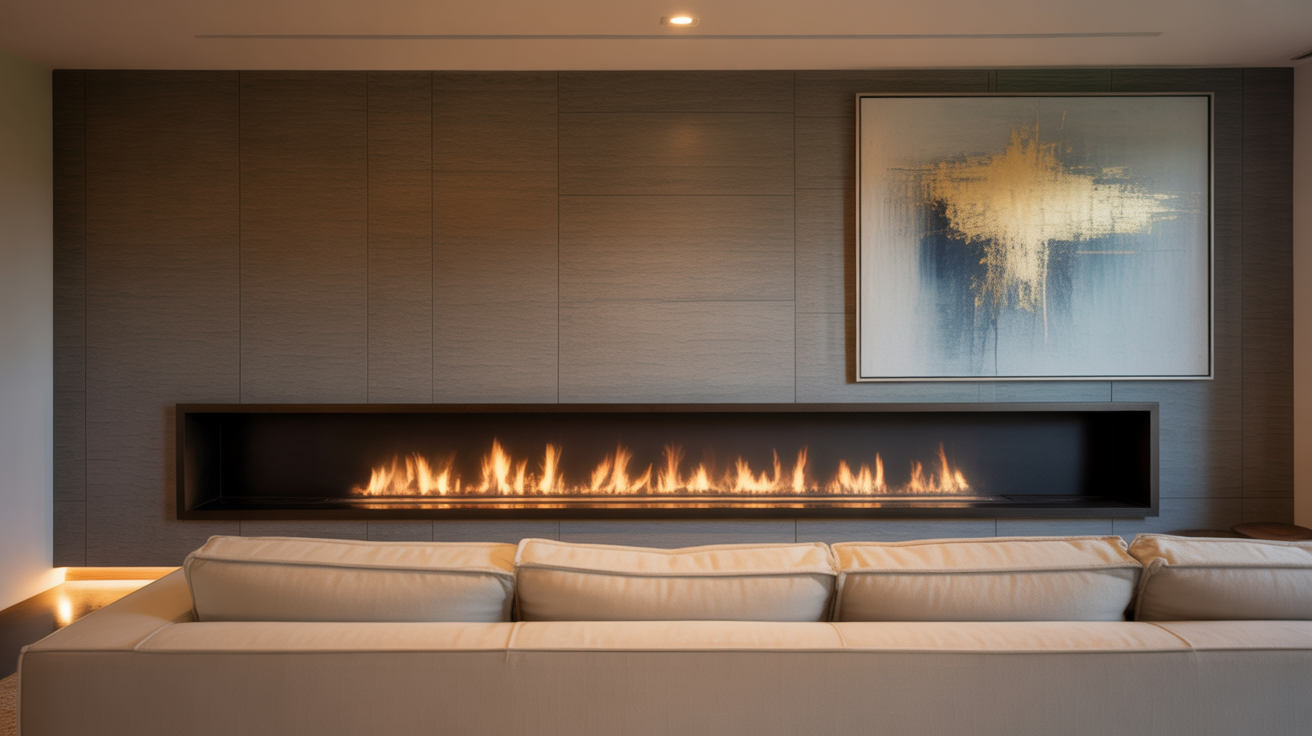Mounting a fireplace might seem straightforward, but once you start measuring and imagining your layout, you’ll realize there’s a bit more to it.
I’ve been there, scratching my head, wondering if my linear unit was too high or if the traditional one should sit closer to the floor.
Getting the height just right doesn’t just improve aesthetics; it enhances comfort, usability, and safety.
If you’re planning a cozy living room, setting up a fireplace below a TV, or working with low ceilings, I’m here to help walk you through the key measurements that will make your setup both stylish and sensible.
Let’s break it down so you can avoid second-guessing and start enjoying your fireplace right away.
Why Fireplace Height Matters?
When I started designing my living room, I thought picking a fireplace was the hard part, but choosing the right height mattered just as much.
Just a few inches can change how the whole room feels. Too high, and it throws off the balance. Too low, and it might look incomplete.
I found out the hard way that my setup looked great while standing, but felt off when I sat down. The height of a fireplace affects comfort, sightlines, heat flow, and overall style.
You might want it to frame a chair or share space with a TV, but it should always feel natural and inviting.
Take your time to plan; once it’s up, fixing it isn’t easy. Get it right from the start.
How to Choose the Perfect Fireplace Height for Your Room
Picking the best height for your fireplace isn’t just about looks; it’s about how it works in your space. The key things to think about are:
- It’s not one-size-fits-all: What works in a large living room might feel wrong in a small den or bedroom.
- Study your layout first: Sit in your main seating area and see where your eyes naturally fall; that’s usually a good height for the fireplace.
- If you’re adding a TV, make sure the fireplace and TV can share the wall without forcing you to look too far up or down.
- Think about purpose: Is it mainly for heat, ambiance, or both? The function will affect how high it should go.
- Follow safety rules: High-heat models need more clearance, so always check the manufacturer’s guidelines.
- Watch out for nearby materials: Keep a safe distance from things that might get damaged by heat, like wood trim or electronics.
- Consider your ceiling and furniture: Room height and how your furniture is placed will influence what feels balanced.
Ultimately, the ideal fireplace height should look great, feel natural, and be safe for your day-to-day living.
What’s the Right Fireplace Height?
Modern fireplaces come in different styles, but height always matters. I learned the hard way that planning ahead is key. Here’s how height varies by type for comfort, looks, and safety:
1. Electric Fireplaces

Electric fireplaces are highly versatile, which is why I often recommend them to both homeowners and renters.
They don’t give off intense heat like gas units, which means you have more freedom in where and how high you place them.
For the best experience, I recommend mounting an electric fireplace anywhere from 12 to 20 inches off the floor, especially if it’s the main focal point in a living area.
Since these units are mainly used for ambiance, placing them at seated eye level makes the most sense.
I once installed one right under a floating shelf with decor, and it gave the wall a balanced, layered look without overpowering the room.
Just make sure to follow the manufacturer’s clearance instructions for ventilation, even if heat isn’t a big issue.
2. Gas Fireplaces

Gas fireplaces bring both beauty and heat, so their placement is a little more technical.
You’ll want to install them high enough to disperse warmth safely, but not so high that the heat becomes uncomfortable or the view awkward.
For most setups, I suggest a mounting height of 16 to 24 inches off the floor, depending on the model and your room layout.
In my last project with a gas insert, I had to be mindful of both safety codes and personal comfort.
That meant checking for required clearance above furniture and making sure the flames aligned with the middle of the seated eye level.
With a good blower fan and remote control, gas units can warm a room fast, so position them where you’ll actually enjoy the view and the warmth.
3. Linear Fireplaces

Linear fireplaces are bold and dramatic, think wide, horizontal flames that run along the length of a wall.
Their clean lines are perfect for modern spaces, but that also means mistakes in placement are hard to hide.
I recommend mounting a linear fireplace between 12 and 18 inches off the floor, especially if it’s the sole focus on a feature wall.
The beauty of linear units is that they’re often more about the look than the heat.
I installed one in my home office at a lower height, and it instantly made the space feel grounded and calming.
If you’re placing yours above a console or built-in unit, you can go higher, make sure the top stays below your natural eye line when seated.
Reasons to Raise Your Fireplace
Why go higher? It’s not just for show. Mounting your fireplace higher can:
- Improve sightlines in large or open-concept spaces
- Keep little hands from touching hot surfaces if you’ve got curious kids
- Add drama or grandeur to your interior design
In my open living room, I opted for a slightly elevated fireplace to draw the eye across the room.
It gave the space a more gallery-like vibe, especially with tall windows flanking each side. But keep in mind that too high can mean too awkward; balance is always key.
Factors to Consider When Determining Fireplace Height Off the Ground
Before you break out the drill, consider these things. They’ll help you avoid regret and make the most of your installation:
- Viewing Angle: Sit on your couch and look at the wall. Where does your eye naturally land?
- Furniture Layout: Will the fireplace compete with or complement your TV, artwork, or shelves?
- Room Size: Smaller rooms may need a lower mount to avoid feeling crowded.
- Safety: Follow clearance guidelines provided by your fireplace’s manufacturer.
- Heat Output: Make sure the heat won’t damage anything above it.
These were all things I jotted down before I even picked out my fireplace model.
Trust me, planning ahead saves time and stress.
Conclusion
At the end of the day, there’s no universal answer to how high you should mount your fireplace. It comes down to your space, your needs, and your style.
I’ve spent hours researching, sketching, and testing different heights, and what I’ve learned is that the best setup is the one that feels right to you.
So take your time. Grab a measuring tape, cut out cardboard to simulate your fireplace, and test different placements.
Walk around the room, sit down, look up, look straight ahead.
This isn’t just about aesthetics, it’s about creating a space where you love to relax, entertain, and feel at home.
With the right height, your fireplace becomes more than just a heating unit; it becomes the warm, glowing heart of your room.

